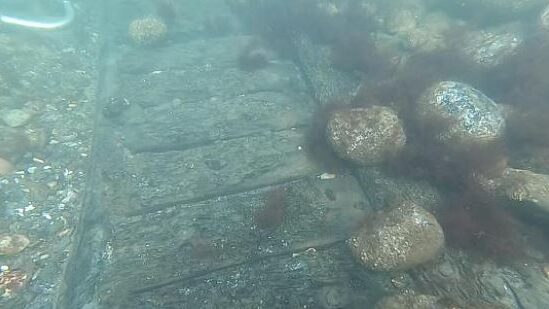Missing for 400 years: Archaeologists discover missing 17th-century warship
The Copenhagen Post reports that the wreckage of the Delmenhorst, one of the first ships constructed from drawings, was found some 500 feet off the coast of Denmark during offshore construction work.
The warship, konow almost completely buried in the seabed, was grounded in 1644 during the Battle of Fehmarn, fought between the Danes and a Swedish and Dutch fleet as part of a brief conflict called the Torstenson War.
It is the last Danish sunken ship missing from the fateful battle, which turned out to be the final battle of the King Christian IV era – he lost his right eye in battle four months earlier.
Realising that the battle had been lost, the ‘Delmenhorst’ was intentionally grounded near Rødbyhavn in the final hours of the battle to a joint Swedish/Dutch fleet because the Danes hoped to defend it using a massive cannon in the harbour town.
However, the crafty Swedes sacrificed one of their own ships by setting it ablaze and sailing it into the ‘Delmenhorst’, which consequently caught fire and sank.

End of Danish power
The battle was waged as part of the Torstenson War, which signalled the end of Denmark’s time as a European power. After the loss, Sweden replaced Denmark as the leading power in the Nordic region.
The Delmenhorst, located about 150 metres off the Danish shore, is unique because it is one of the first ships constructed from drawings.
The wreck was discovered as part of the work on the Fehmarn Bridge connecting Denmark and Germany.
Because the wreck is almost completely buried in the seabed, archaeologists will leave it in the hope that experts will have the technology to glean information from it in the future.





